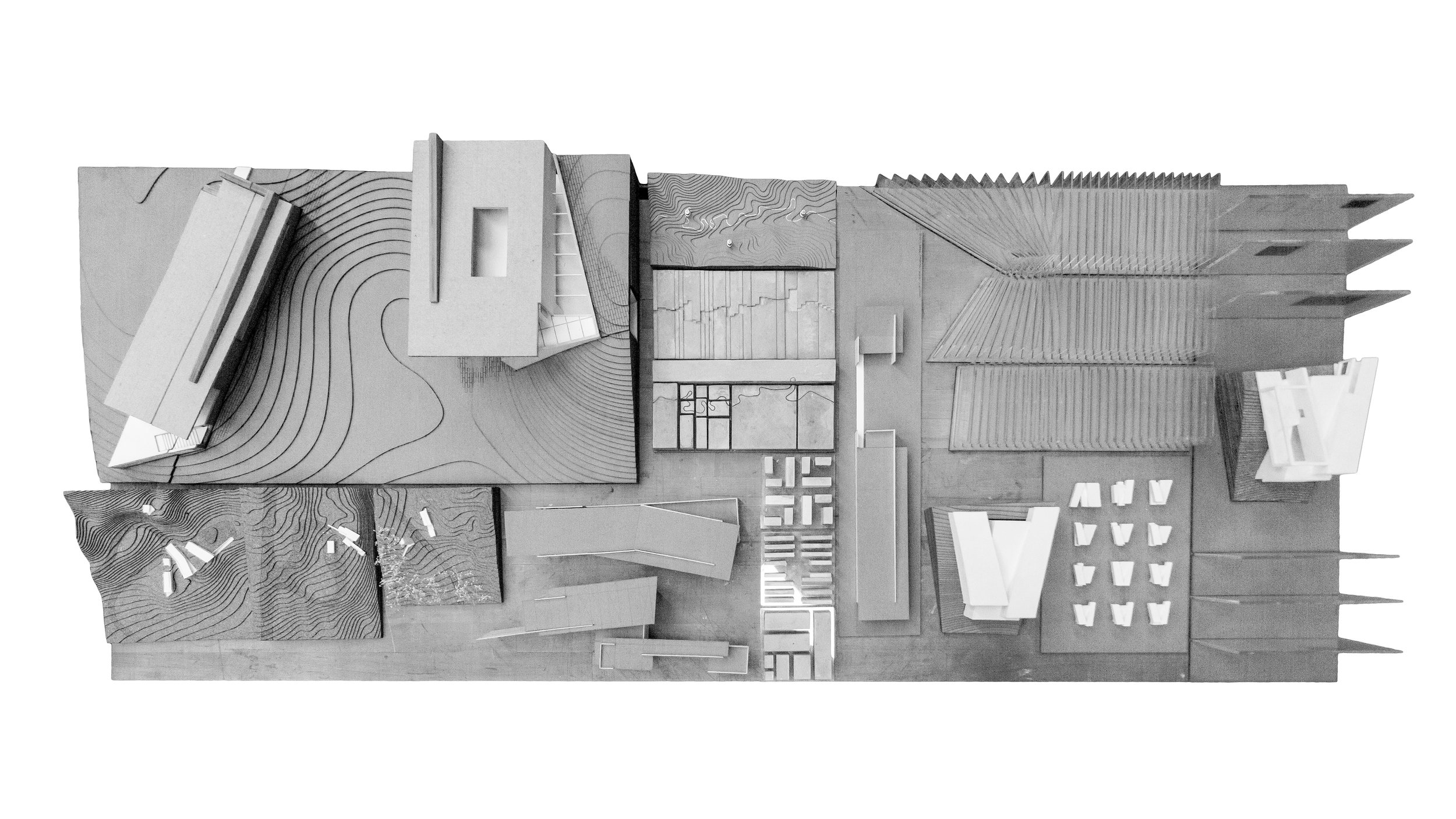
Epilogue
Part of the Maryhill Loops Road intervention in my thesis: “Constructing the Gestalt”
Reflections
Over the course nine months the work has evolved from questions reaching out in many directions to focused inquiries on what creates a sense of place. Questions regarding ‘why’ this sense of place is critical in the built environment distills down to one position uncovered through the making of the thesis: Architecture must always create something that gives more to a place than it takes away.
Creating a sense of place requires a sensibility for the existing condition as well as the condition of the proposed intervention. Through the mediation of these two forces opportunities within the architecture begin to emerge that contribute towards its totality. A work reaches its totality when nothing more can be added and nothing more can be taken away. Through this study an architecture is proposed that relies on itself as well as the cognition of the inhabitant to discover its totality.
Architecture does not have to be an explicit expression of totality, but instead can engage the senses and uncover its total nature through the inhabitant’s experience. The uncovering of this implicit whole, gestalt, or totality is the sense of place.
On the “Parametric Envelope”
The methodologies used in the thesis became critical during the various explorations and investigations. One recurring theme that continually showed itself was the idea that architecture could be designed in a capacitative way. The obvious argument against this is that architecture is understood as a static entity in the physical world. In the design process however, architecture conceived in this nature has an inherent flexibility within itself. The result of this is an architecture that maintains an order within itself while its inherent flexibility enables it to adapt to a specific condition. The mediation between these two orders, the condition and the architecture, is evidence of a parametric envelope holding the architecture together.
In constructing a sense of place an order must be understood within the architecture. Conversely the architecture must also acknowledge its specific condition to avoid the notion that architecture is simply the ‘placement of objects’. The parametric envelope mediates this paradoxical relationship between orders and lays out the framework through which this sense of place is constructed.
New Inquiries
For the most part, architecture is inherently an additive process. If an architecture allows an inhabitant to construct a sense of place a link must be created between two elements. This link fills in a ‘negative’ which is either physical or cognitive.
How do the additive processes in architecture inform the making of space that which appears to be a product of subtractive thinking?
The topic of experience or memory began to inform the thesis due to the cognitive link the inhabitant has to make between the past and the present. This raises concern for the viability of memory and to what degree architecture can influence these links.
When is a link too obvious? What is the bare minimum one can do to create these links?
How does architecture mediate the tactile, visual and cognitive whole?
It could be argued that a ‘sense of place’ is an understanding beyond the explicit. It is an inquiry into the implicit or the understood. It is not a quantifiable, but the qualitative.
Why does the built environment need architecture of a qualitative dimension?
When is this qualitative state reached? It is designed, discovered or attributed to a place over time?
Pin-up for consideration in the Pella Prize. Selected as 1 of 5 finalists.
© Forrest Bibeau, 2022

